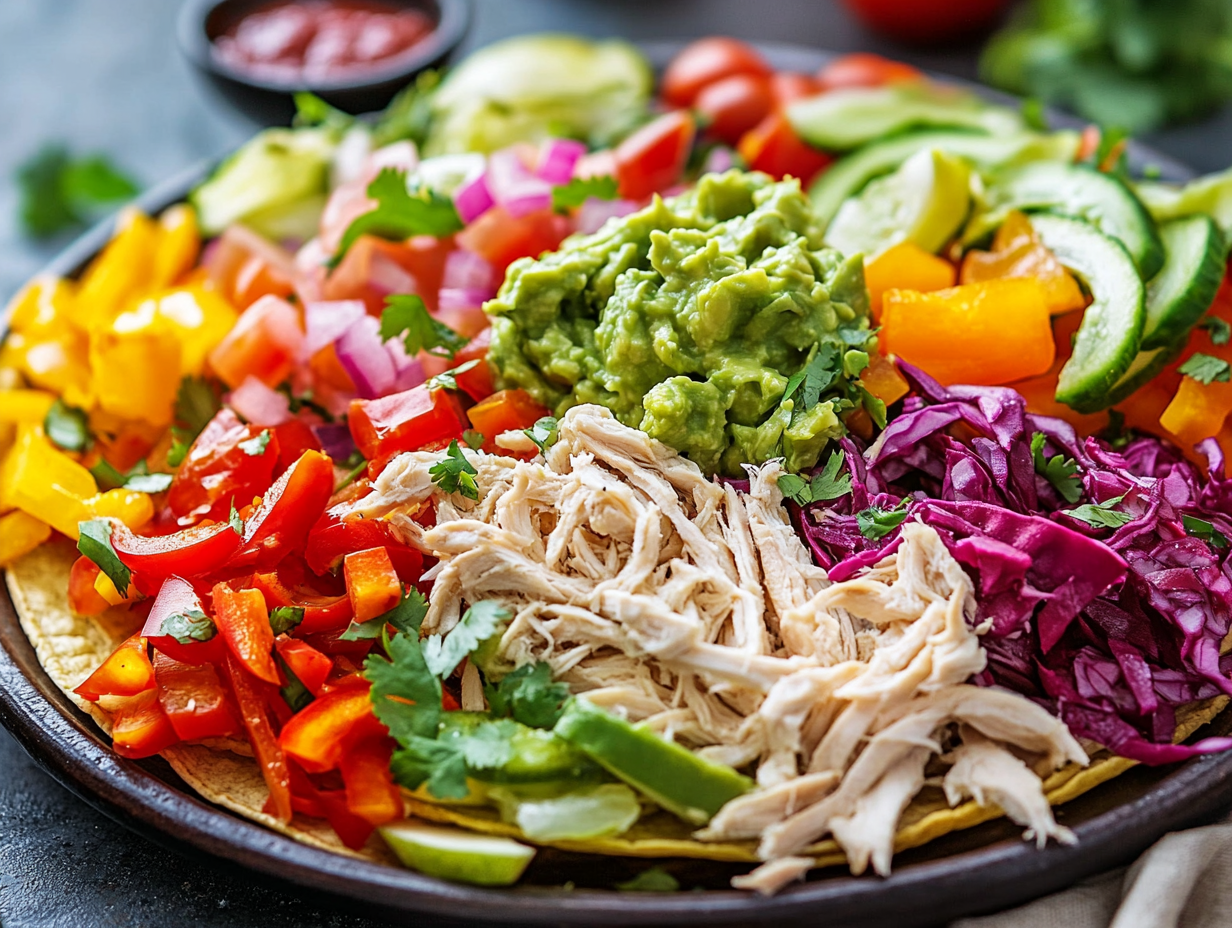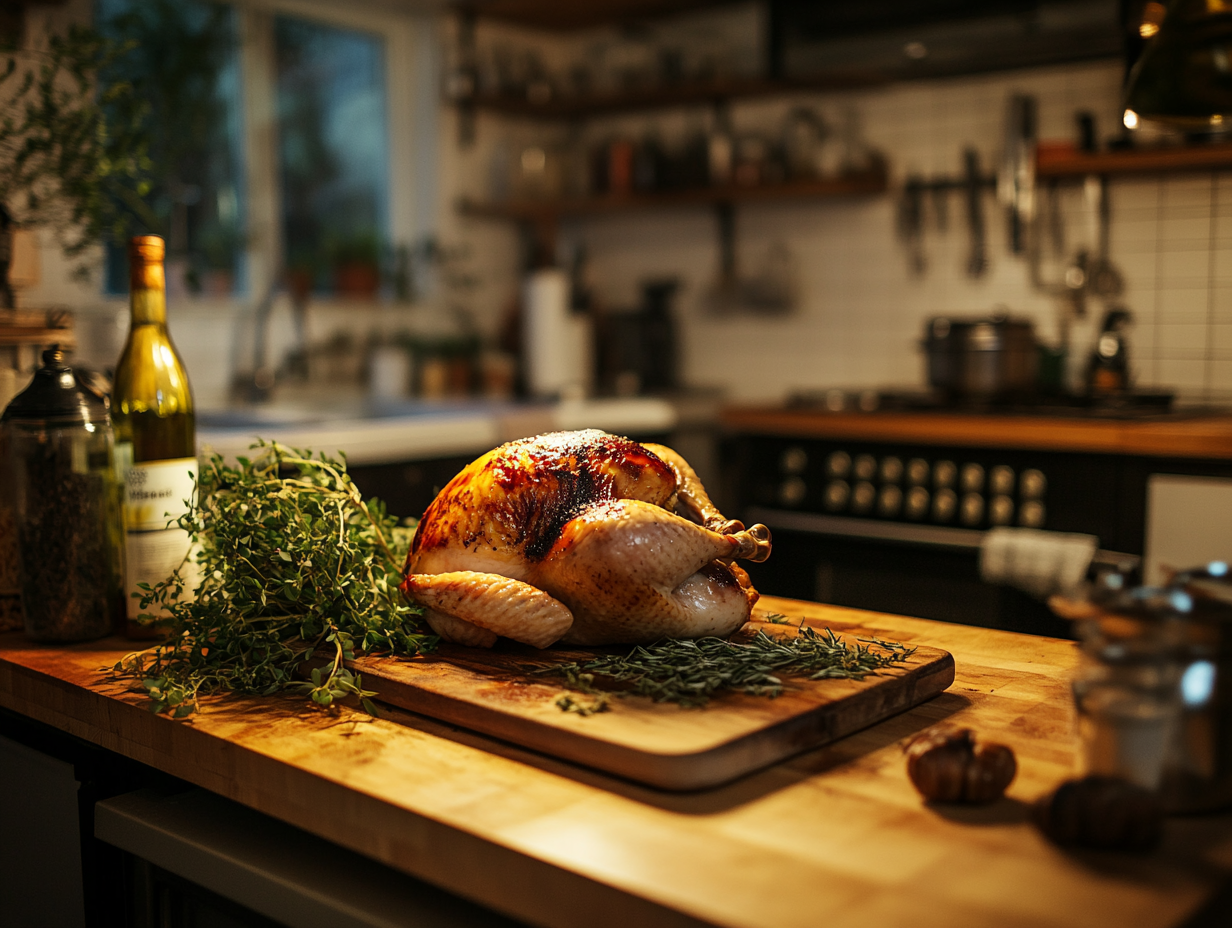Rotisserie chicken is a versatile, ready-to-eat meal enjoyed by many for its savory flavor and convenience. However, you might wonder, “Can you freeze rotisserie chicken to use later?” The short answer is yes! Freezing rotisserie chicken is an excellent way to extend its shelf life, reduce food waste, and save time on meal prep. Whether you’re trying to make the most of a store-bought chicken or save leftovers from a homemade rotisserie, understanding the proper techniques is essential for maintaining its quality.
This guide will cover everything you need to know about freezing rotisserie chicken safely and effectively. From preparation and storage tips to reheating ideas, you’ll find practical advice for preserving this delicious dish. Let’s dive in!
Why Freeze Rotisserie Chicken?
Benefits of Freezing Cooked Chicken
Freezing rotisserie chicken comes with several advantages. First, it helps reduce food waste by preserving leftovers that might otherwise spoil. Second, freezing makes meal planning more flexible. Having pre-cooked chicken on hand can save time during busy weekdays. Lastly, freezing retains the nutritional value of the chicken, ensuring it remains a healthy addition to your diet.
Preserving Flavor and Nutrition
Properly frozen rotisserie chicken maintains much of its original taste and texture. By sealing it correctly, you can lock in the juices and seasonings, keeping it just as flavorful as when it was freshly made.
Food Safety Considerations
Freezing rotisserie chicken is not only safe but also a common practice to extend its usability. However, certain precautions must be followed to avoid contamination or spoilage. Ensure the chicken is cooled to room temperature before freezing, as putting hot food directly into the freezer can raise the overall temperature, compromising the safety of other stored foods.
Time Limits for Freezing Cooked Chicken
For optimal taste and quality, rotisserie chicken should be frozen within two hours of cooking. If properly stored, it can remain safe to eat for up to four months, though the texture and flavor are best enjoyed within the first two months.
Precautions for Maintaining Quality
To preserve the chicken’s taste and prevent freezer burn, it’s essential to use airtight packaging. Freezer-safe bags, vacuum-sealed containers, or heavy-duty aluminum foil work well. If freezing the chicken whole, remove any stuffing as it doesn’t freeze well and can encourage bacterial growth.
How to Prepare Rotisserie Chicken for Freezing
1: Cooling the Chicken Properly
After purchasing or cooking your rotisserie chicken, allow it to cool completely before freezing. Placing hot chicken in the freezer can create condensation, leading to ice crystals that affect the meat’s texture and taste. For faster cooling, remove the chicken from its packaging and spread it out on a baking sheet.
2: Deboning and Portioning
While you can freeze a whole rotisserie chicken, it’s often more practical to separate it into portions. Remove the meat from the bones, as this saves space and makes thawing and reheating quicker. Consider dividing the chicken into meal-sized portions or shredding it for easy use in recipes later.
3: Wrapping and Storage
Wrap the chicken tightly to protect it from air exposure, which can cause freezer burn. Use a layer of plastic wrap followed by aluminum foil or place the portions in freezer-safe bags. Squeeze out as much air as possible before sealing. Label the package with the date for easy tracking.
How Long Does Frozen Rotisserie Chicken Last?
Shelf Life in the Freezer
When properly stored, frozen rotisserie chicken can last up to four months without a significant loss in quality. However, for the best taste and texture, it’s recommended to use it within two months. Beyond this period, the chicken remains safe to eat if kept at a consistent freezing temperature of 0°F (-18°C), but the flavor and texture might degrade.
Signs of Freezer Burn and Spoilage
Freezer burn occurs when air reaches the chicken, causing dehydration and tough, discolored patches. Although freezer-burned chicken is safe to eat, its quality will be compromised. To prevent this, ensure the chicken is sealed tightly. If you notice unusual odors, slimy texture, or ice crystals embedded deeply in the meat, these are signs of spoilage, and the chicken should be discarded.
Best Practices for Labeling
Always label your frozen chicken with the date it was frozen. This helps you keep track of how long it’s been stored and prevents you from forgetting older portions buried in the freezer. Including a note about whether the chicken is whole, shredded, or portioned can also be helpful when planning meals.
Tips for Freezing Rotisserie Chicken
Choosing the Best Containers and Wraps
The type of storage container you choose can significantly impact the quality of frozen chicken. Vacuum-sealed bags are the gold standard, as they remove excess air and prevent freezer burn. Alternatively, heavy-duty freezer bags or airtight containers work well if vacuum-sealing isn’t an option. Avoid using standard plastic bags, as they allow air to penetrate over time.
Avoiding Common Mistakes When Freezing
One common mistake is freezing chicken that hasn’t been fully cooled, leading to moisture and ice crystal formation. Another is overfilling freezer bags, which can result in uneven freezing and difficulty in thawing. Lastly, avoid freezing chicken with stuffing or sauces that may not freeze well.
Keeping Your Freezer Organized
A cluttered freezer makes it hard to find stored items, increasing the chances of forgetting about your chicken until it’s past its prime. Designate a specific area for frozen cooked foods and use transparent containers or clear bags to make identification easier. Rotating older items to the front can also help ensure they’re used first.
How to Defrost and Use Frozen Rotisserie Chicken
Methods for Safe Defrosting
Defrosting rotisserie chicken correctly is crucial to maintaining its safety and quality. Here are the three safest methods:
- Refrigerator Thawing: Place the frozen chicken in the fridge and allow it to thaw slowly over 24 hours. This method is the safest and helps retain the chicken’s texture and flavor.
- Cold Water Bath: For faster thawing, submerge the chicken (sealed in a waterproof bag) in cold water. Change the water every 30 minutes. It typically takes a few hours, depending on the portion size.
- Microwave Defrosting: If you’re short on time, use your microwave’s defrost setting. Be cautious, as this method may start cooking the chicken unevenly, leading to texture changes. Use it only if you plan to cook or reheat the chicken immediately.
Reheating Tips to Retain Texture and Taste
Once thawed, reheating your rotisserie chicken properly ensures it remains juicy and flavorful:
- Oven Reheating: Preheat the oven to 350°F (175°C). Place the chicken in a baking dish, add a splash of broth or water, and cover it with foil to keep it moist. Heat for 20–25 minutes or until warmed through.
- Stovetop Reheating: Heat shredded chicken in a skillet over medium heat with a small amount of oil or broth. Stir occasionally until warmed.
- Microwave Reheating: Place portions in a microwave-safe dish and cover with a microwave-safe lid or damp paper towel. Heat in 30-second intervals, checking for even warming to avoid drying out.
Recipe Ideas for Leftover Chicken
Frozen rotisserie chicken is incredibly versatile and can be used in a variety of dishes. Here are some popular options:
- Chicken Salad: Combine shredded chicken with mayonnaise, celery, and seasonings for a quick and delicious salad.
- Tacos or Burritos: Add thawed chicken to tortillas along with your favorite toppings like salsa, guacamole, and cheese.
- Casseroles and Soups: Use diced chicken in creamy casseroles or hearty soups for added protein and flavor.
- Pasta Dishes: Mix the chicken with pasta, vegetables, and a sauce of your choice for a simple, filling meal.
- Pizza Topping: Shred and scatter it over homemade or store-bought pizza crust for a quick dinner idea.
Common Questions About Freezing Rotisserie Chicken
Can You Freeze Chicken with the Skin On?
Yes, you can freeze chicken with the skin on, but it may become less crispy after freezing and reheating. For best results, remove the skin if you plan to use the chicken in recipes where texture matters.
Does Freezing Affect the Taste?
When frozen and stored properly, rotisserie chicken retains much of its original flavor. However, slight changes may occur if freezer burn sets in or if it is stored for an extended period.
Is It Better to Freeze Whole or Shredded?
This depends on how you plan to use the chicken. Whole chicken is convenient for reheating as a main dish, while shredded chicken is more versatile for recipes. Portioning the chicken before freezing often provides the best of both worlds.

FAQ
Can I refreeze rotisserie chicken after thawing it?
It is generally safe to refreeze rotisserie chicken if it was thawed in the refrigerator and has not been left at room temperature for more than two hours. However, refreezing may negatively affect the texture and flavor. For best results, divide the chicken into smaller portions before freezing to avoid repeated thawing and refreezing.
How can I prevent freezer burn on rotisserie chicken?
To prevent freezer burn, ensure the chicken is tightly wrapped in freezer-safe materials like vacuum-sealed bags, heavy-duty aluminum foil, or airtight containers. Removing as much air as possible from the packaging also helps. Proper labeling and organized storage can minimize the time chicken spends in the freezer, reducing the risk of freezer burn.
Can I freeze store-bought rotisserie chicken still in its original packaging?
While the original packaging is convenient, it’s not ideal for long-term freezing as it may not provide an airtight seal. It’s best to rewrap the chicken in freezer-safe materials for optimal preservation.
Should I remove the bones before freezing rotisserie chicken?
Removing the bones before freezing is recommended for better space efficiency and easier defrosting. Shredding or portioning the chicken before freezing also makes it more versatile for recipes and faster to thaw. However, you can freeze the chicken with the bones if preferred.
What’s the best way to reheat frozen chicken without drying it out?
Reheating chicken with moisture is key to retaining its juiciness. Add a splash of water or broth when reheating in the oven or on the stovetop. Covering the dish with foil or a lid helps trap moisture. If reheating in the microwave, use a damp paper towel or a microwave-safe lid to prevent drying.
Can I freeze leftover chicken dishes like casseroles or soups?
Yes! Leftover chicken dishes freeze well and can be stored for up to three months. For soups or casseroles, use freezer-safe containers or heavy-duty bags, leaving some room for expansion during freezing. Thaw and reheat thoroughly before serving.
Conclusion
Freezing rotisserie chicken is a smart way to save time, reduce food waste, and ensure you always have a quick meal option on hand. With proper preparation and storage techniques, you can preserve its flavor, texture, and nutritional value for months. Whether you freeze it whole, portioned, or shredded, this versatile food can easily transform into countless delicious meals.
By following the tips and best practices in this guide, you can confidently freeze rotisserie chicken for future use, knowing it will be safe, tasty, and convenient whenever you need it. So next time you have leftovers or want to stock up, don’t hesitate to freeze that rotisserie chicken!

